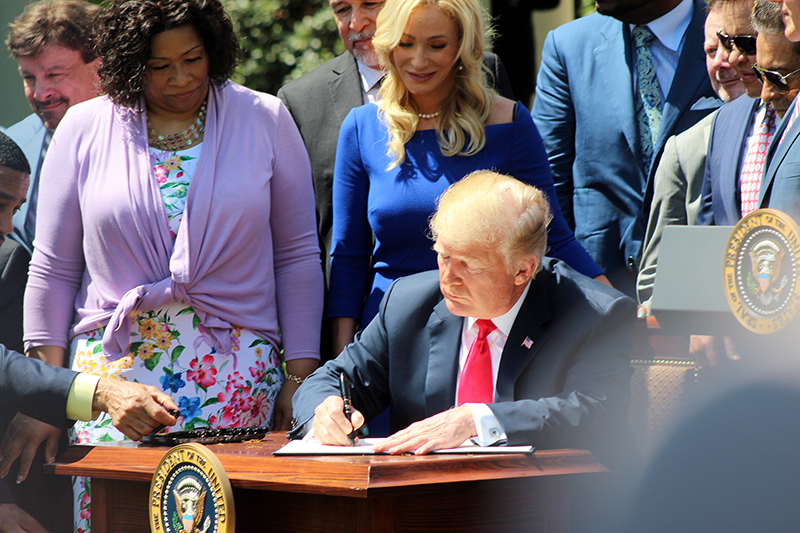
The White House Faith and Opportunity Initiative, President Trump’s revival of the faith-based office created and continued by his two predecessors, is supposedly all about advancing the cause of religious freedom.
“President Donald J. Trump Stands Up For Religious Freedom In The United States” goes the headline on the press release announcing Thursday’s signing of the executive order establishing the office. And sure enough, the “initiative” is ordered to report to the Attorney General “any failures of the executive branch to comply with protections of Federal law for religious liberty” outlined in the Attorney General’s memorandum of last October.
But you don’t need a special office in the White House to receive complaints and pass them on to the Justice Department.
No, religious freedom is the mask worn by Faith-Based 3.0. What’s going on behind the mask is actually the opposite.
Here’s how that goes down. (Pay attention, because there will be a question on this on the final.)
Section 2(b) of Trump’s executive order reads as follows: “Executive Order 13279, as amended, is further amended by striking section 2(h) and redesignating sections 2(i) and 2(j) as sections 2(h) and 2(i), respectively.”
Now, “Executive Order 13279, as amended” is in fact Executive Order 13559—President Obama’s establishment of rules governing provision of services by faith-based organizations. In line with his belief in “all hands on deck,” Obama wanted faith-based providers to be able to receive public monies to do their thing, but he also wanted to ensure that those who didn’t want any part of their thing had somewhere else to go.
Ergo, Section 2(h), which reads, in part: “If a beneficiary or prospective beneficiary of a social service program supported by Federal financial assistance objects to the religious character of an organization that provides services under the program, that organization shall, within a reasonable time after the date of the objection, refer the beneficiary to an alternative provider.”
By removing Section 2(h), Trump’s executive order removes this requirement. So now, if a beneficiary objects to the religious character of the organization providing her with services, the organization can tell her to like it or lump it.
What the new Initiative does, in short, is allow faith-based social service providers to use government funds to impose their religious mission on recipients who want no part of it. Where Obama ensured religious freedom, Trump creates religious establishments.






